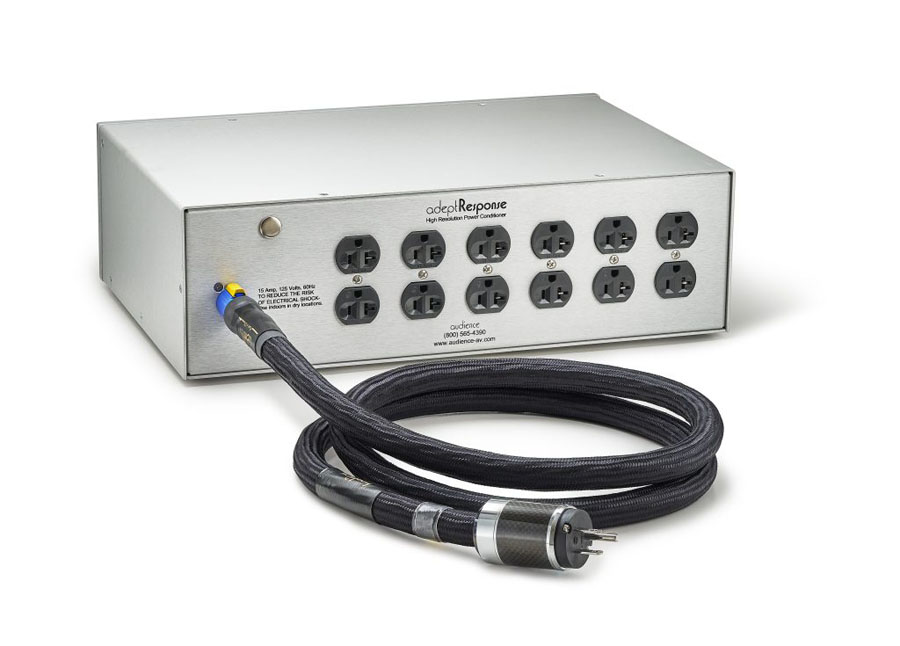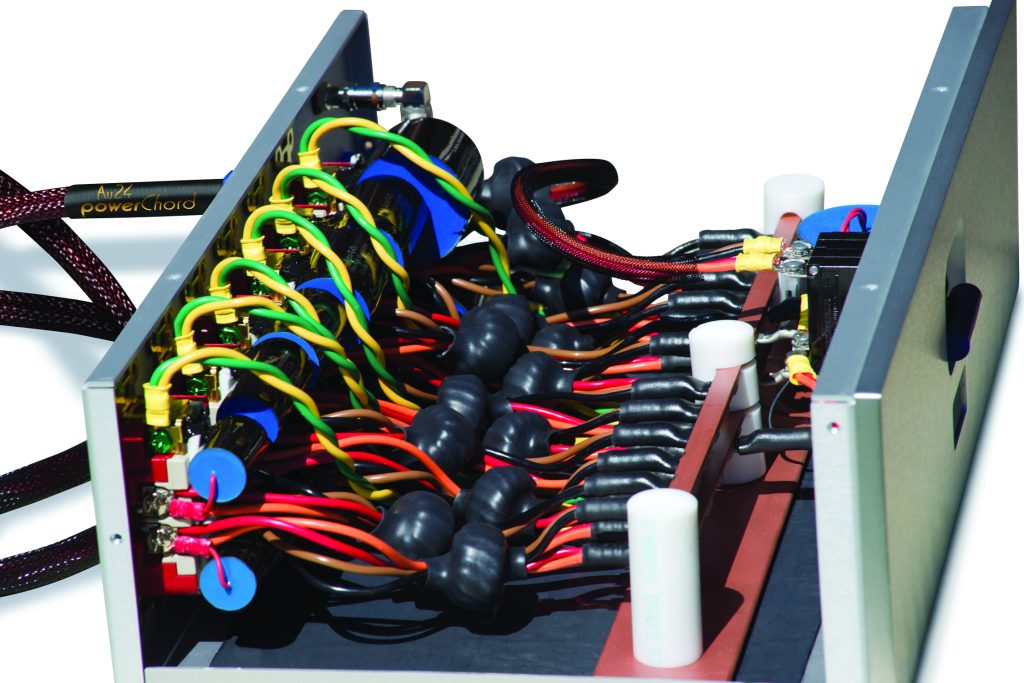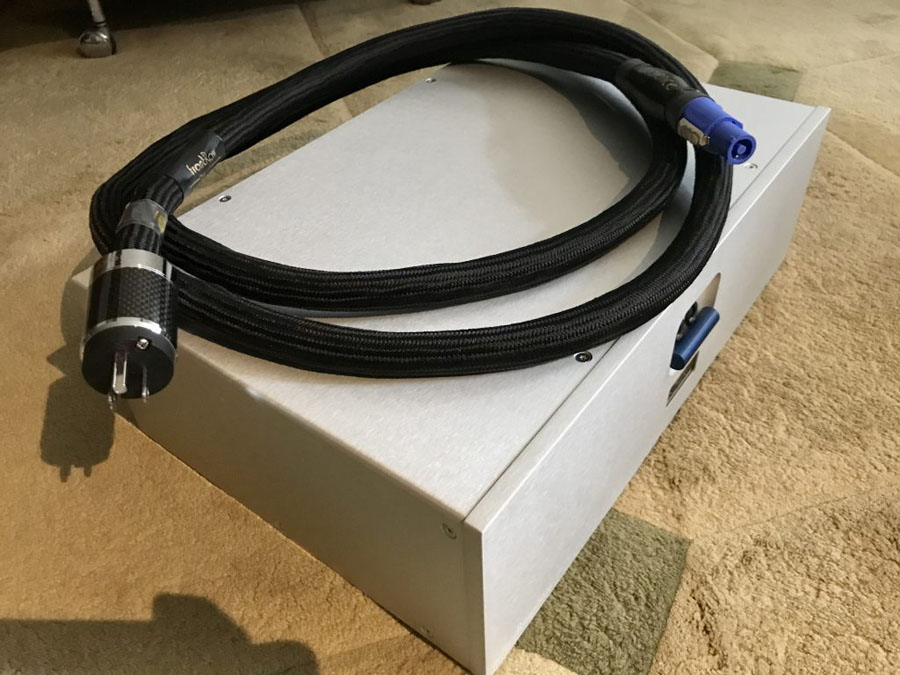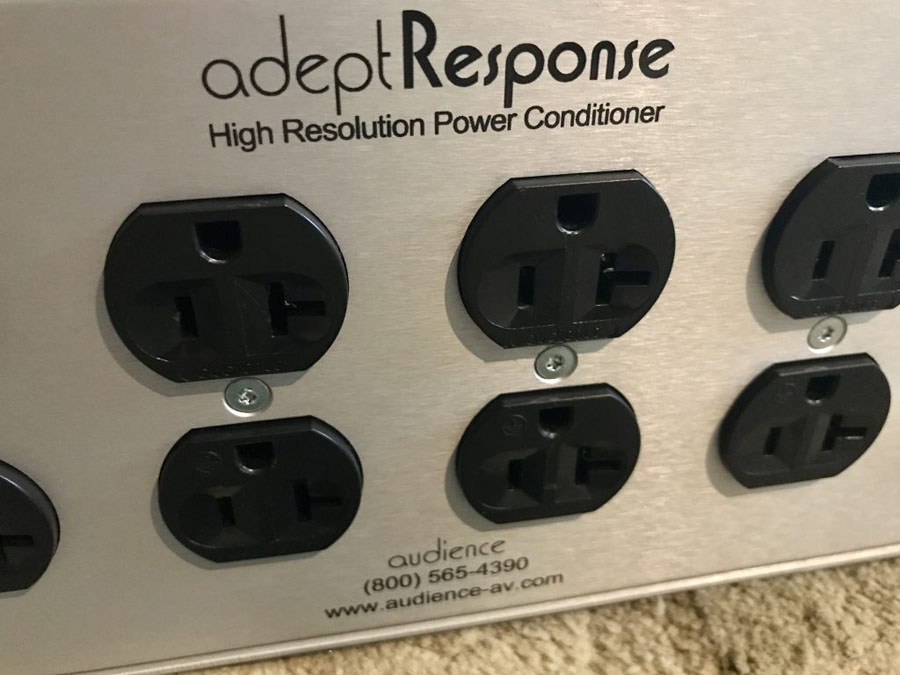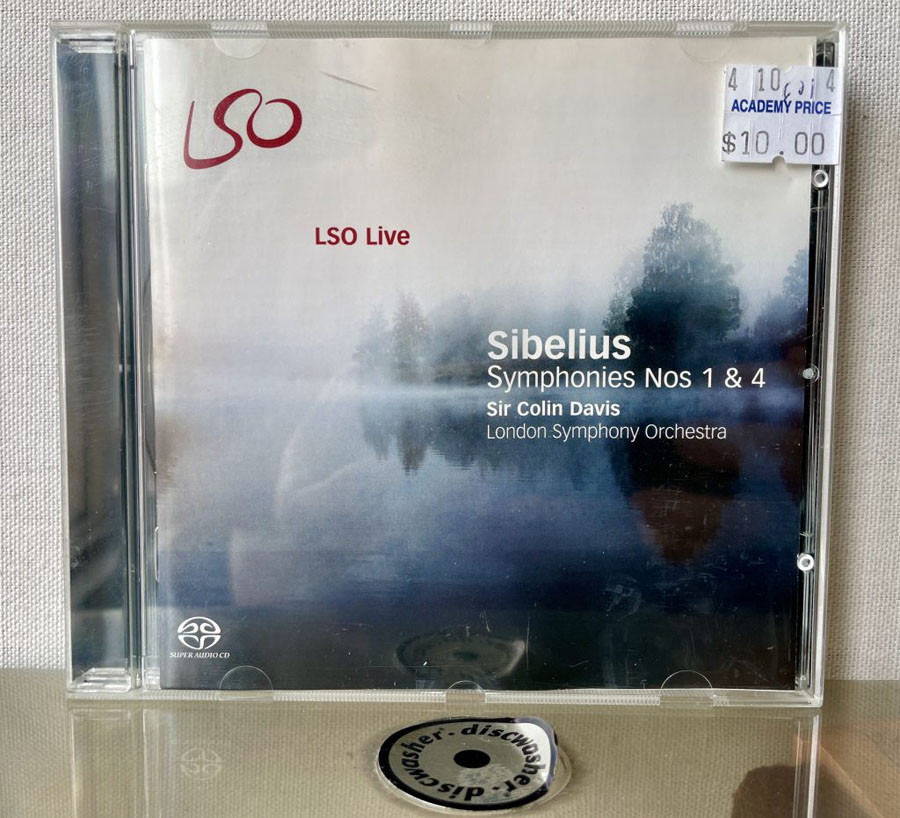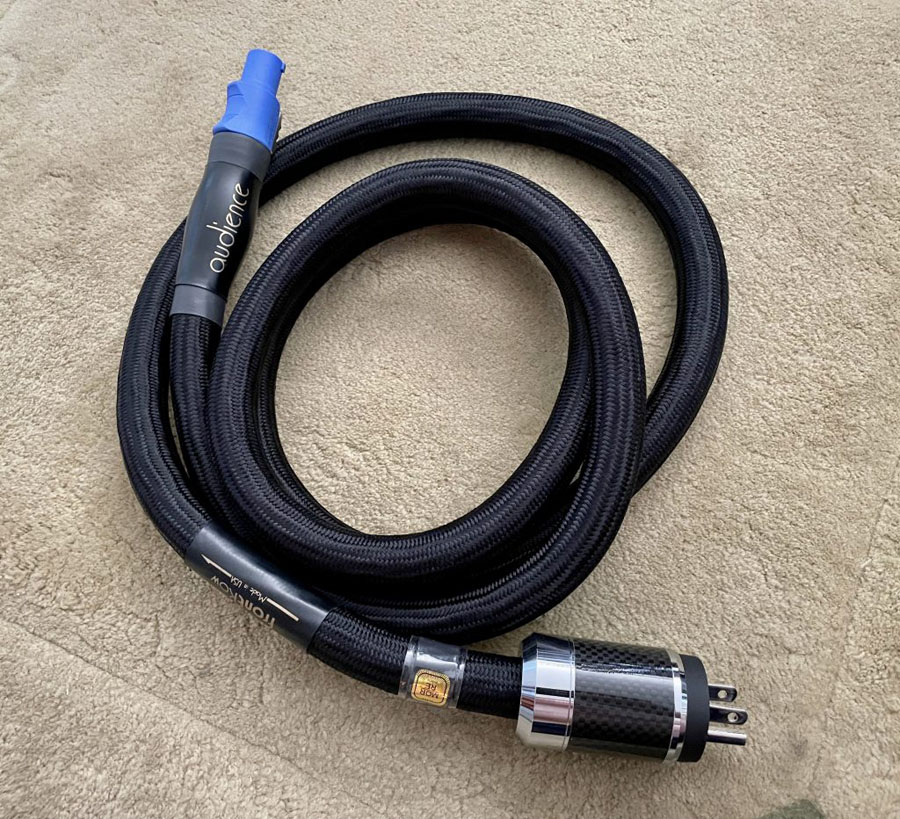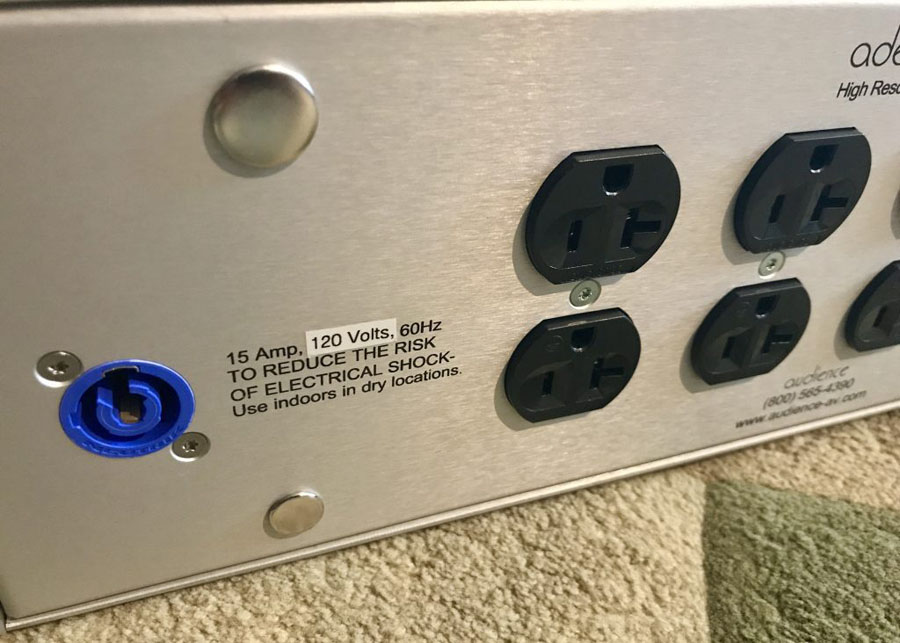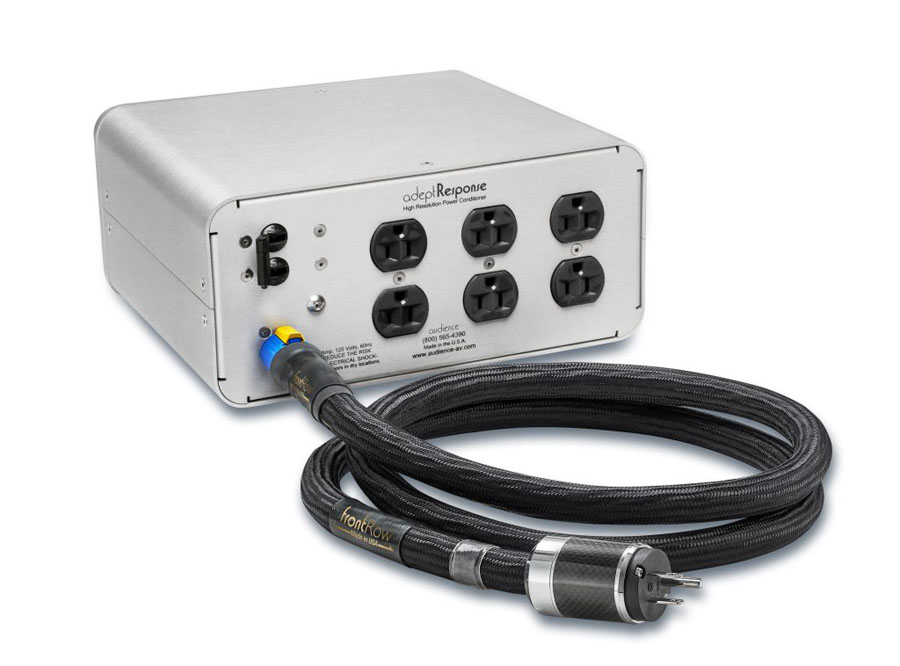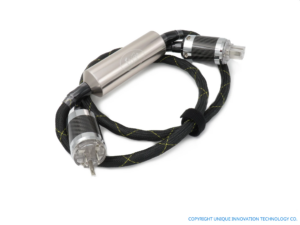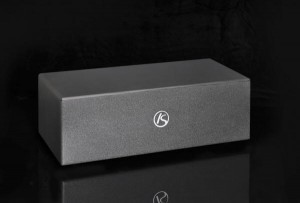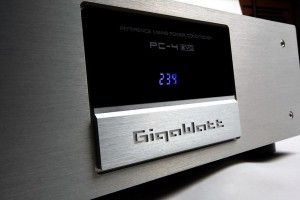It was around the midpoint of my Hi-end audio journey when I heard my first passive power distributor and I can still recall the shock. At this time—I'm talking decades ago—the Hi-End embraced the philosophy less is more. Virtue lay in the fewest electronic devices and the shortest signal paths. Minimalism ruled. The goal of the purist passives was simplicity in design and they appeared not much more than high-quality power strips with esoteric parts and long rows of audio-grade outlets. While I don't remember the brand, I do recall being startled by its naturalism and purity. I fell hard.
Until then, I had worked my way through plenty of active conditioners. These did some things very well, particularly if you owned low-end gear, but they invariably imparted disturbing artifacts. Good passives don't add artifacts and they don't subtract information—the amount of fine detail they pass is amazing. That said, their drawbacks are also well known. Typically, dynamics take a hit, speed is negatively impacted, and transients acquire a rounded edge. Often the soundstage softens and becomes recessive. Still, the passives were the more compelling option, provided naturalism was your aim.
I still feel that way about power delivery, so I'm somewhat embarrassed to admit that only in the last year did I become aware of a third option, a sort of hybrid device residing in the passive camp that incorporates features not typically found in the purist designs. The Audience adeptResponse aR12-T4 Power Conditioner is a good example of this type of hybrid. Its large chassis takes up most of a shelf. If you look inside it is densely filled with wire, solid copper bus bars, circuitry including large capacitors of various sizes and special ultra low-impedance inductors, a fancy On/Off switch, incoming voltage display, and an elaborate surge protection circuit. There isn't much vacant space in the big box. Technically, it is a passive.
aR12 with the top cover removed.
The adeptResponse, introduced in 2005, has been on the Stereophile Recommended Components list ever since. I read some of the many online reviews and noted recurring observations about its neutrality, how it did not fundamentally change the sound in any way. They all mentioned its naturalness and a noise floor that drops below audition. In the main, I found those statements to be accurate. It was also clear that the aR12-T4 did introduce changes.
Our Sound Before
Going into this review, I dare say our system was in a happy place with my reference pure passive distributors in stream. I had tackled the big issues one by one, leaving no significant problem areas you could put your finger on. Of course, there were many secondary areas that could be better. The cycle of eking out ever shrinking gains never ends, otherwise we would be done. Then how would we spend our time?
One of these secondary maladies doesn't make it to anybody's list of bullet points, but is very important. I'm referring to the pull of the system, the engagement factor. On any given evening, the entertainment would begin with a musical selection or two that often wowed us. All too soon, however, our attention would wander and we would start to drift off. This was quite unlike the hours-long sessions we used to have. Could complacency have set in after all these years? Perhaps Covid induced blahs?
Unique Timbral Signatures
The engagement issue—let alone its solution—was elusive, until the aR12-T4 addressed it head on, and I can even denote how: by removing blockages in three areas that we deem critical. For one, lately Lynn had been saying the sound was homogenous, there wasn't enough variety or difference from instrument to instrument. The aR12-T4 diced up the timbral palette into finer shadings, just what was needed to clarify low-level differences and resolve the unique signature of each instrument. We sat upright when we heard this explicit differentiation.
Musical Flow
Another area that caught my ear was the analog-like continuity as notes pass from player to player and proceed in time. We say the sound has good musical flow when it moves fluidly, as it does with analog sources such as turntables and reel to reel tape, and unlike the comparatively coarse, step-like gradations that you have with digital sources. Please note that while flow implies smoothness, it is NOT low-res. The means to improve flow is by increasing resolution.
Not thinking the system was lacking in this regard, I was surprised when good became better. The aR12-T4 once again retrieved a little more detail to fill in and smooth out transitions in tone and dynamics. For example, there is a musical notation "< >" nicknamed a "hairpin." This dynamic marking indicates a note or phrase is to begin quietly, build to a crescendo, and then decrescendo. We missed it before; the passage had been a steady tone. Insights of this sort make listening more interesting and paying attention is rewarded.
With the aR12-T4 in place, digital began to sidle up to analog. And my turntable? Flow was taken up a level. Analog is always one step ahead.
Precision Soundstaging
The third area addressed was precision in soundstaging. I had a bunch of Marigo SuperDots on the walls of the room that did wonders for ambiance retrieval, clarity, and smoothing out frequency response. But, as usual with tweaks, where a few are good, too many introduce unwanted side effects. In this case, tone lost density and the sound became tight. Removing a couple of SuperDots brought immediate tone improvement, but there was fallout. Our impressions of the hall became blurry; dimensionality collapsed because ambient cues were soft; soundstage depth and width truncated. The instruments began piling up in the center of the horizontal axis.
The aR12-T4 brought back the contours of the recording venue. You could "see" into every nook and cranny, there were no blocked areas, and instrument placement within the space was completely obvious. It seemed really natural, not artificially hard-edged or exaggerated. Put a check next to resolution. The beauty of it was the aR12-T4 retained tonal density, actually boosting it slightly. So you can check off musicality. The aR12-T4 is one of those few products that push resolution and musicality.
These were the three principal areas of improvement compared to the pure passive. Others were better control of the treble, deeper and heavier bass, and wider dynamic range. The sound was very composed, less susceptible to artifacts. One thing to note about the adeptResponse: you will only hear these improvements if they are on the source. I remarked on this very low coloration when I reviewed the frontRow series of wires. The aR12-T4 is honest in the same manner. It will not fix a poorly engineered CD.
Yeah, we still occasionally nod off on the couch, but now it's not so routine. It happened again last night when I put on the Sibelius Symphony No. 4. With its glacial pace, atmospheric tonal clusters and harmonic tensions, Symphony #4 resembles many contemporary works. And when the work ends, there's no pay off. Paraphrasing the liner notes, Sibelius was ahead of his time with this composition. Is it any coincidence that it's his least popular symphony?
Cosmetics and Design
The aR12-T4 is a large silver (or black) aluminum chassis with a satin finish, measuring 17" W × 5.25" H × 11.4" D and weighing 15 pounds. It comes with a 6' Audience 10 AWG powerChord SE-i with locking Neutrik 20A Powercon® connector, but you should seriously consider upgrading to the frontRow High Power powerChord. I wish more power products used locking connectors.
The latest T4 version brings three improvements: 1) top-of-the-line Aura-TO Teflon capacitors; 2) Audience copper-core, rhodium-plated Hidden Treasure duplexes; 3) burn-in of every component in the conditioner with the Extreme High Voltage Process (EHVP) treatment. Note that the Hidden Treasure outlet grips really tight, especially the first time you use them. Each outlet is isolated, not just each duplex.
Each of the 12 outlets is individually filtered and double filtered from every other outlet providing maximum component to component isolation.
Much attention (and expense) is focused on avoiding common performance-degrading circuits. The power switch is a very high-quality magnetic circuit breaker, instead of the cheaper thermal one. Surge protection employs a non-wearing type of high-voltage transient suppression system, instead of the ubiquitous MOV (Metal Oxide Varistor). The MOV is a sacrificial device and wears down over time causing increasing amounts of audible degradation. This surge protection feature is important to me. Last summer, we experienced two soft power outages. Nothing was damaged, but I realized I had little protection against a more severe event.
Because the largest capacitors are situated closest to the Neutrik Powercon® connector in the circuit layout, Audience recommends plugging amps and high power components into the duplex next to it on the left. Analog gear goes into the middle, and digital to the duplexes on the right side.
I was advised to give the aR12-T4 a full two weeks, 24/7, for burn-in. The caps take time to form and settle down. This is best accomplished when the unit has a couple of loads on it drawing current.
aR6 with frontRow PC
Conclusion
Everybody needs a power distributor—who has a dozen wall outlets to spare? (Is that even a good idea?) There are basically two types—passives and actives, with some variations in between. I've been a devotee of the purist form of passives for decades.
Recently, a passive incorporating features typically found in actives came in. After a two week settling in period, I find I'm not missing any of the benefits of the pure passive I had been using. The Audience adeptResponse aR12-T4 Power Conditioner proved its equal in the things passives do best. Actually, the adeptResponse is a nose beyond it in purity and musical flow, as incredible as that sounds. And in the areas where passives are typically weak, like dynamics, the capacitors and inductors inside the aR12-T4 brought improvements.
Sometimes you eagerly anticipate a product arrival, but when you put it in—zilch, nada—you don't hear much difference. Then, if you throw a reference-quality CD in the tray—bam, it's right there in front of you. That's what happens when the product has very low coloration and high fidelity to the source.
This was the case with the adeptResponse Power Conditioner. The aR12-T4 doesn't shift the frequency response one way or another or change the aural picture you already have. Instead, it's a matter of good being made better. If you already have good sound, the aR12-T4 will make it better by applying the finishing touches, fleshing it out, and completing it.
Midway through the audition, my path forward was laid out. The Audience adeptResponse was going to become my reference for the entirety of my system's AC needs. It is a serious investment: $11,400 for the aR12-T4 + $6300 if you spring for a 2m frontRow High Power powerChord upgrade. That makes a tidy $17,700 to handle the front-end gear. Later on, I would add an aR6-T4 and a frontRow High Power powerChord for my amps. That's $6600 + $6300, another tidy $12,900.
What can I say? If you can afford it, it's the best power delivery I've heard so far.
adeptResponse aR12-T4 Power Conditioner
Retail: $11,400, including an Audience SE-i powerChord.
adeptResponse aR6-T4 Power Conditioner
Retail: $6600, including an Audience SE-i powerChord.
Upgrade to a frontRow High Power powerChord is offered at $6300/2m, when purchased with any adeptResponse conditioner ($6700 when purchased separately)
Audience AV




